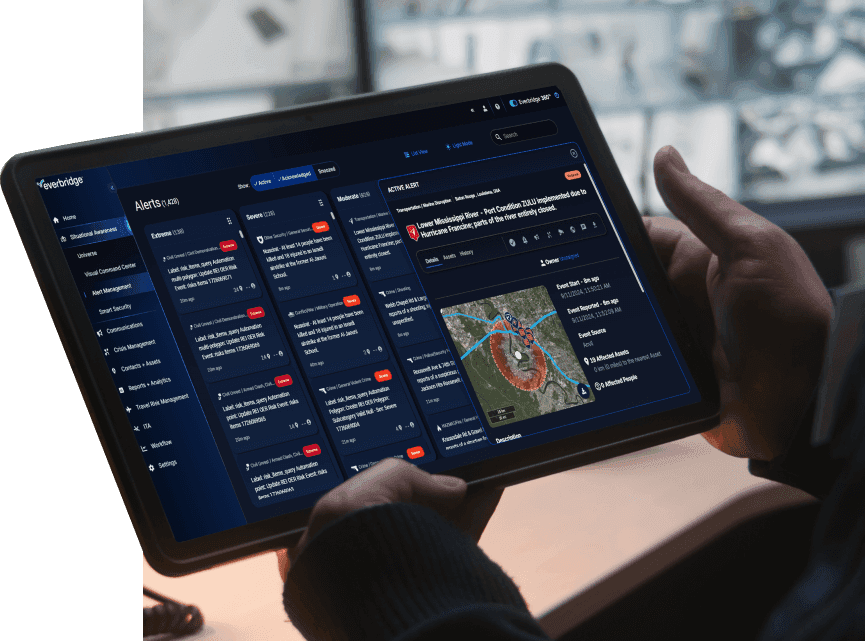Everbridge 360 is a critical event management platform that strengthens resilience by helping you detect threats earlier, respond faster, and improve continuously. The Core version of Everbridge 360 helps organizations safeguard employees, maintain business continuity, and respond to emergencies with real-time insights, global reach, and reliable multi-channel messaging.
Everbridge 360 is a critical event management platform that strengthens resilience by equipping organizations to detect threats earlier, respond rapidly, and continuously improve. The Enterprise version of Everbridge 360 provides the most advanced features, such as cutting-edge analytics, enhanced automation, and exceptional scalability. It is designed to support large-scale operations, ensuring efficient responses and deeper insights into risks while maintaining seamless functionality for organizations with expansive needs.
Everbridge 360 is a critical event management platform that strengthens resilience by helping you detect threats earlier, respond faster, and improve continuously. The Professional version of Everbridge 360 provides advanced communication tools and mobile safety features to enhance capabilities, protect your workforce, and ensure smooth operations during emergencies.
